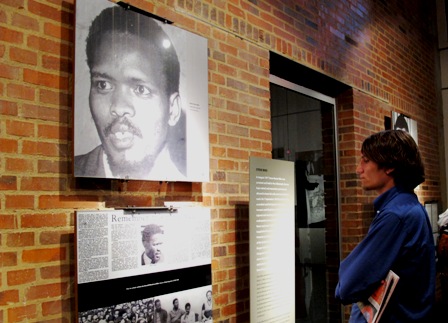
Soweto, South Africa
“Some cities were founded on a river, some around a church,” says our tour guide, Pumla, as our bus leaves Johannesburg, South Africa, heading toward Soweto, the sprawling shantytown where she lives. “Johannesburg was founded on greed.”
In our three days together on and off the bus, it’s the only time bitterness creeps into her voice, and even now, Pumla says it far more mildly than I would have expected, given this country’s history of brutal White supremacy that ended just 17 years ago.
I’m traveling with a group of two dozen American secondary school teachers, on the Toyota International Teacher Program. The auto maker has been funding these trips for thirteen years, always with an environmental theme. This is the first time the destination has been on the African continent. While environmental issues can rarely be understood taken out of their social and political context, that’s particularly true in the case of South Africa. The first two days (out of 17) are devoted entirely to the history of Black struggle against White domination and exploitation.
Johannesburg was a gold rush city, born in the 1800s. To ensure cheap labor, the British rulers of the time imposed a general tax, while prohibiting blacks from owning land sufficient to pay the tax. The only work available was in the mines.
Today, Jo’burg, as the city is informally known, is South Africa’s financial and business hub. And, while there is now a Black middle class in the city, most Blacks still live in the nearby township of Soweto.
Soweto has changed since the racist “apartheid” government was ousted and a Black man, Nelson Madela, was elected president. But some changes are agonizingly slow. For example, most residents of Soweto live in poverty and a meaningful education is still out of reach for most of the children here. The official unemployment rate is 23 percent – but if you include those involved in the informal economy, that rate goes up to 43 percent.

Social studies teacher Zach Taylor at the Apartheid Museum.
Yesterday, Pumla led us through the Apartheid Museum in Jo’burg, which documents – to devastating effect – the history of struggle against a bureaucratic system of organized oppression. A couple of teachers liken it to the Holocaust Museum in Washington, D.C., and when we gather that evening to talk about the day, the room is filled with sobs.
Today, we visit several historically important sites in Soweto, including the Hector Pieterson Memorial and Museum, named for the 12-year-old boy who was shot to death during a peaceful protest march on June 16, 1976. It was the spark for what became known as the Soweto Uprising. From a window in the museum, two cooling towers from an old coal-fired power plant are visible. They’re located in Soweto, but until recently, the power lines ran just one way – toward Jo’burgh.
We pass close by the towers on the way back to our hotel. The giant brick structures are brightly painted with post-apartheid murals of Black musicians, artist and leaders.

Coal plant cooling towers, Soweto.
“There used to be a saying,” Pumla tells us over the bus’s PA system. “We used to say that the towers bring electricity to Whites and pollution to Blacks.”
And that is one measure of change since the end of apartheid. Today, Soweto receives electricity – just as Jo’burg does. Only residents of Soweto, however, must continue breathing the contaminated air.
[To be continued.]











